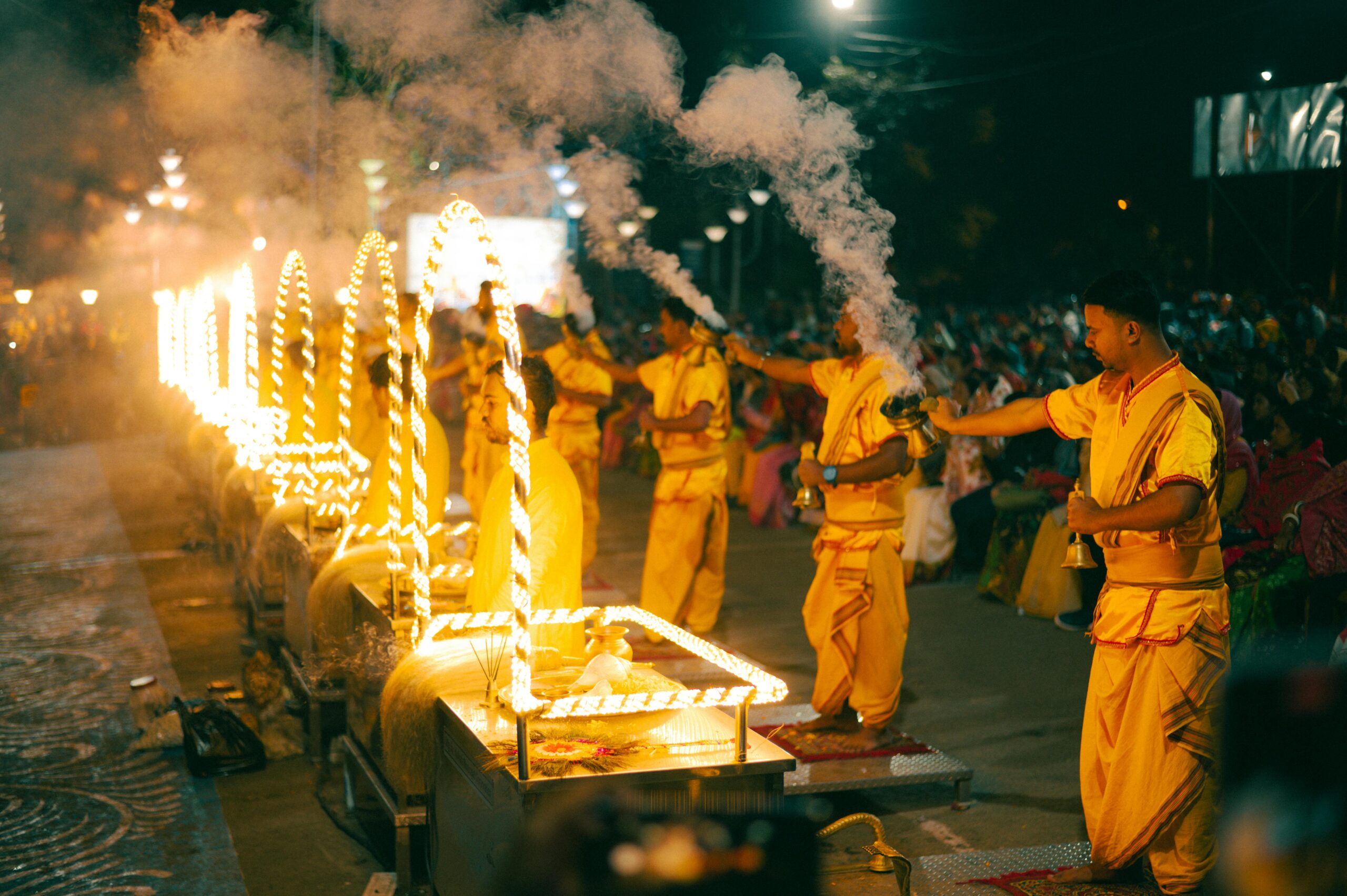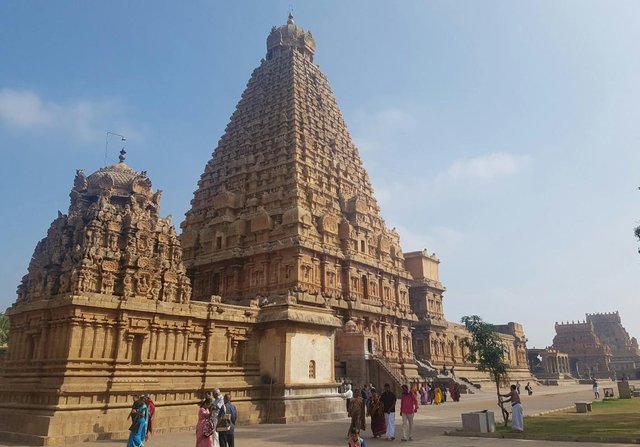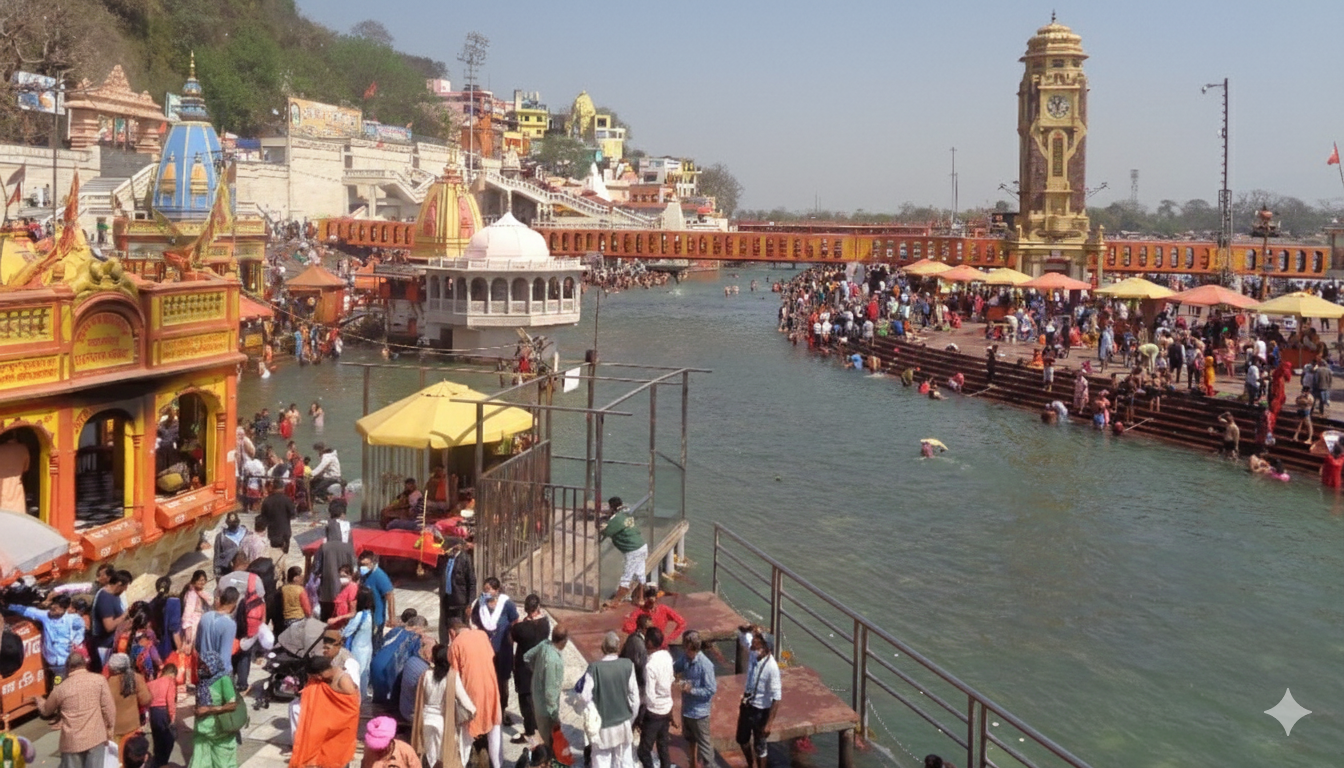Childhood Fascination and Mythical Connection
While growing up in Kerala, the place Kashi (Varanasi) came across as a fascinating one — quite far away in a distant land, especially when listening to the stories from my grandmom. What I mostly heard was that, as per Hindu mythology, Kashi, along the banks of the River Ganga, belongs to Lord Shiva. It is also believed that one’s soul will attain Moksha if they are fortunate enough to have their last breath and cremation on the banks of the Ganga in Kashi.
The belief still holds strong that many people bring the ashes of their loved ones here to immerse in the river. Even a dip in the holy waters of the Ganga in Kashi is said to relieve one’s sins and purify the inner self.
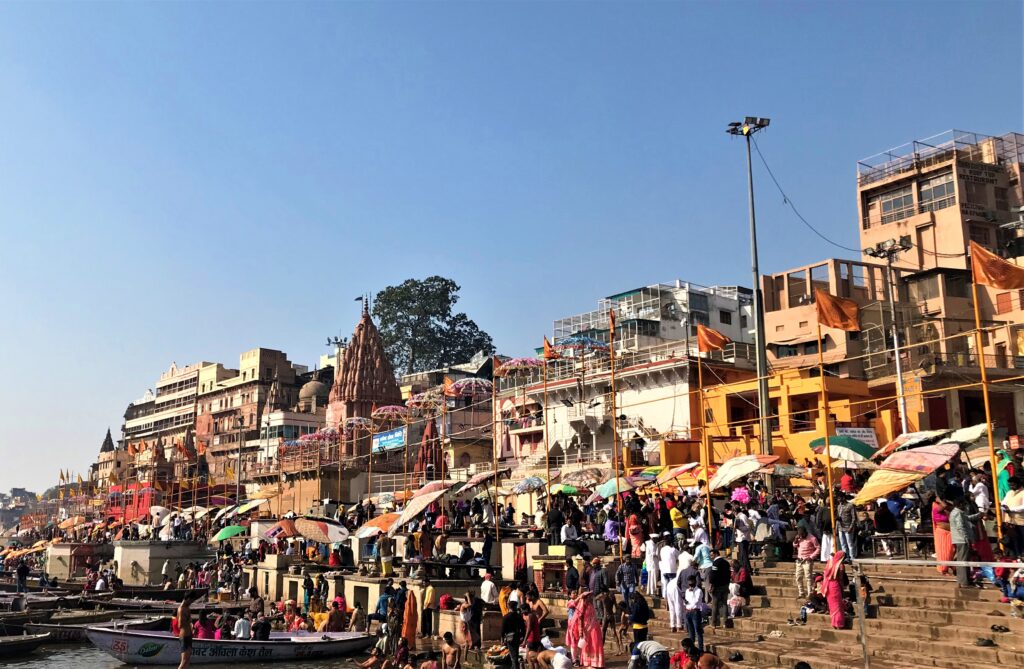
A Malayalam novel titled Varanasi by a well-known writer, in which the story revolves around the city as it was many decades ago, gave me a more realistic picture of the place. These stories, the famous Shiva temple, the ghats along the river, the sacred dip, the Ganga Aarti, and the cremation ghats were all etched in my mind for years, making sure that Kashi — or Banaras or Varanasi — always stayed on my list of must-visit places.
The Shortest Trip – Like Instant Coffee
Unfortunately, this turned out to be the fastest trip I ever made — like an instant coffee. The only suitable train on the day I planned was one passing through Mughal Sarai station, quite far from Varanasi Central and Kashi Railway Station, and in fact from the temple area itself. Add to that the usual “late” of Indian Railways, with a delay of almost 4–5 hours, which eventually led to the loss of a day from my plan. Finally, I had to cut short a few things on my ‘to-do’ list and limit my visit to a few famous temples and nearby ghats.
First Impressions of the Holy City
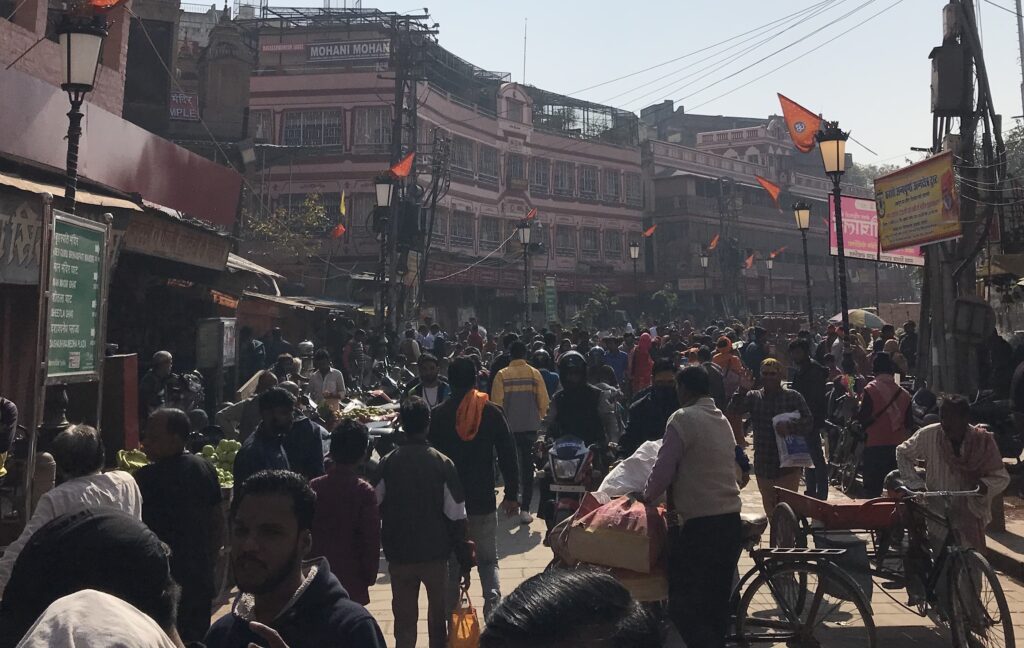
My first day started late in the afternoon. I decided to take a local bus ride from Mughal Sarai to Varanasi — around 23 km — to get a feel of an unknown place beyond its devotional side due to the presence of Lord Kashi Viswanath. One of the best ways to experience such a holy place, older than known history, is to go with an open mind and no fixed perceptions. But sadly, neither the journey nor the surroundings near Varanasi Junction evoked much enthusiasm as a tourist spot, except for a long bridge over the Ganga that looked special. People seemed busy with their daily routines, finishing off another day.

A Small Temple and a Roadside Delight
In a holy city like Varanasi, one doesn’t have to go far to find worthy places, especially temples. Very close to where I got down from the bus — hardly 50 meters — there was a Devi temple known as Sri Maa Kaliji Mandir. Though not famous, many locals returning from work still found time to stop for darshan before heading home. I too went inside, curious to see how a small, lesser-known temple in Kashi would be — and to offer my prayers.
By then, it was already time for some tea and snacks. Experiencing local flavours is always part of any trip, and outside the temple, there were plenty of options. Some local snacks with hot coffee from a five-stool roadside tea stall filled the stomach as if it were dinner from a five-star hotel.
The Hanuman Temple and the Double-Decker Bridge
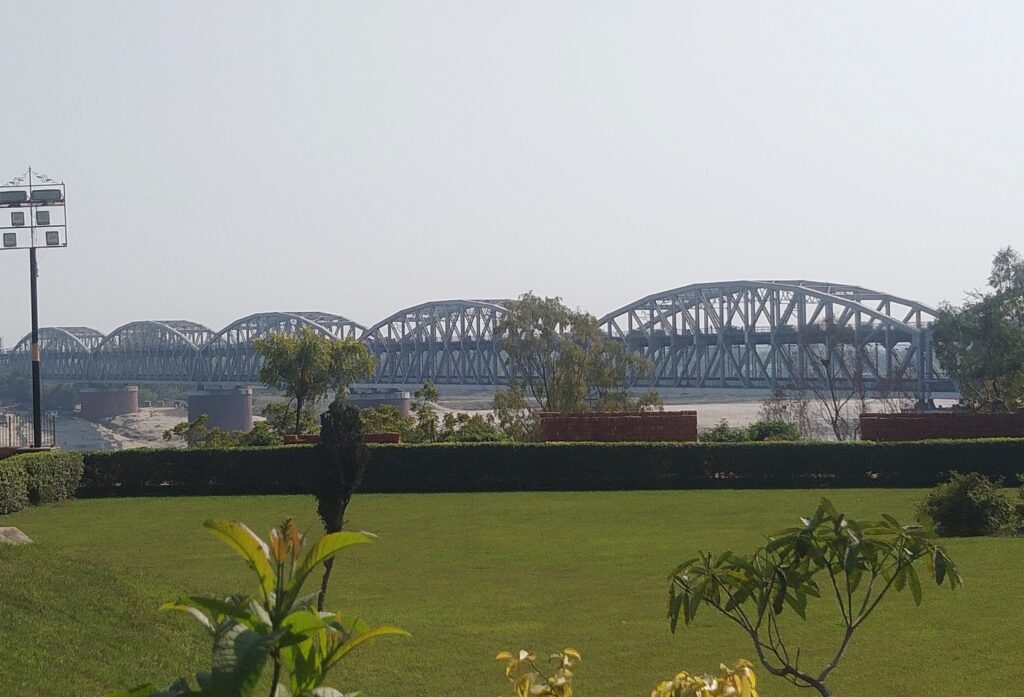
A taxi ride back to the hotel was tempting, giving me a chance to see more of Varanasi and make quick stops at a couple of interesting places — a Hanuman temple and the double-decker bridge over the Ganga that I had noticed earlier while travelling by bus.
The Hanuman temple was a large and famous one, though I forgot its exact name. The location was close to the Banaras Hindu University. What made it even more interesting was that the locality itself was called Lanka, a name directly linked to the Ramayana and the stories of Lord Rama and Hanuman. As every temple offers some kind of comfort, this one was no different. Both the idols of Lord Rama and Hanuman were given equal importance, placed facing each other in a special arrangement.
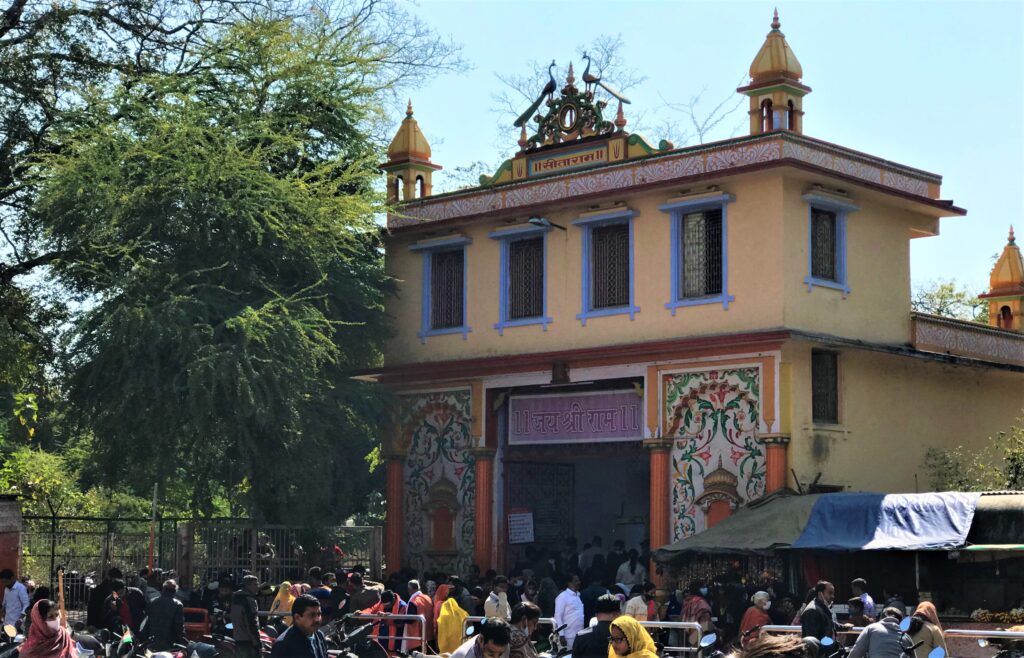
Staying a little away from Varanasi also gave me the chance to cross the unique double-decker bridge over the Ganga, near Rajghat. On one side of the bridge lie the ghats and the famous Kashi Viswanath Temple, offering a grand panoramic view of the temple city. The bridge, about a kilometre long, allows trains and vehicles to cross simultaneously on two levels — trains below and vehicles above.
We are all familiar with double-decker buses and trains, and even roads and rail lines running parallel, but a double-decker bridge carrying both one above the other was a rare sight. It was even more impressive considering it was built over a hundred years ago. Looking at the structure made me wonder about what kind of infrastructure would be required a century from now — perhaps roads built above roads to overcome congestion. A funny thought, yet not entirely impossible!
Ghats and Temples in Kashi
This place is better known as Kashi than Varanasi or Banaras, as the word Kashi sounds more divine and directly connected to Lord Shiva. Vedic history credits Lord Shiva for the construction of this city. Considered the oldest living city, it continues to fascinate historians across the world. The famous American writer Mark Twain wrote, “Banaras is older than history, older than tradition, older even than legend, and looks twice as old as all of them put together.”
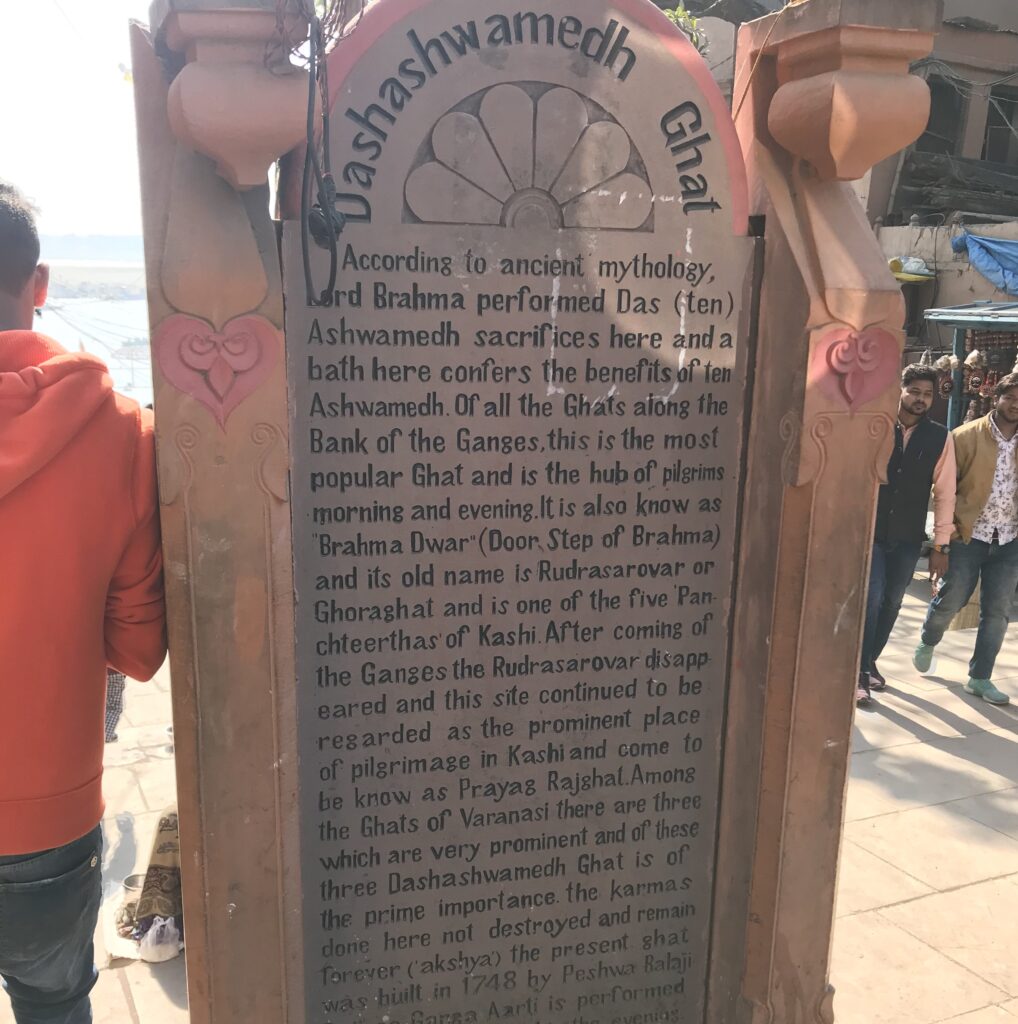
It is said that Lord Shiva was impressed by the city’s immaculate design and careful planning. Whether one believes it or not, the very discussion about such planning and construction millions of years ago is fascinating in itself.
The Sacred Darshan of Kashi Viswanath Temple
The disappointment from the previous day vanished as soon as I reached the temple and ghats the next morning. My first stop was the Kashi Viswanath Temple, situated on the banks of the Ganga. This is the most famous temple in the city, built around 1490, and houses one of the twelve Jyotirlingas, the most sacred forms of Lord Shiva.
The Jyotirlingas represent Lord Shiva as pillars of light, symbolizing His infinite nature. The other famous temples include Somnath in Gujarat, Mallikarjuna Swamy in Andhra Pradesh, Rameshwaram in Tamil Nadu, and Kedarnath in Uttarakhand — making it easy to understand how sacred Kashi truly is.
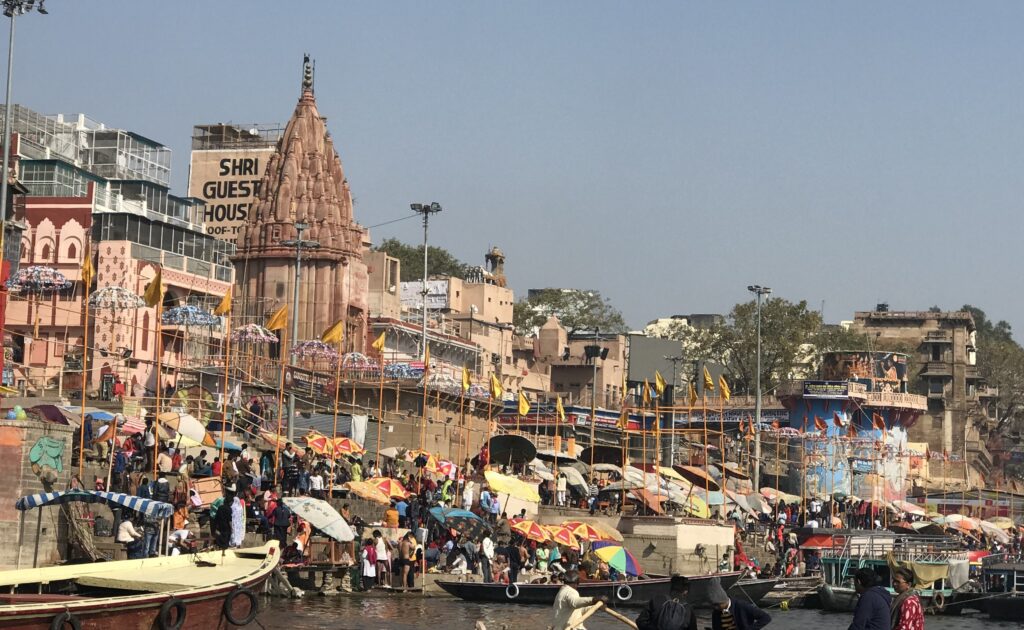
The narrow lane leading to the temple, known as Viswanath Gully, can confuse first-time visitors. Surprisingly, despite the massive footfall, no middlemen or touts were offering paid shortcuts to darshan. The shopkeepers along the gully, selling pooja items, were kind and humble. They also kept devotees’ shoes, mobile phones, and cameras safely since these were not allowed inside.
As expected, there was a long queue. The crowd pressed forward, but once inside, everyone seemed calm, letting others pray peacefully before the idol. The atmosphere came alive with chants of Har Har Mahadev echoing through the temple.
The divine air within the small, stone-walled temple was charged with energy — the chants, prayers, and fragrance of incense creating an experience beyond words. Every minute spent there felt precious, as if fulfilling a long-pending dream for my mother.
Inside the complex were several smaller shrines, including the famous Gyan Vapi or Wisdom Well. It is believed that the original Jyotirlinga was hidden here during the Mughal invasions to protect it from destruction.
The Divine View and a Personal Fulfilment
Stepping outside, I took in the majestic view of the temple and the riverbank below. The top of the temple, adorned with gold plates donated by a king, shone brightly under the sun. A small spire (chatra) at the top is said to grant wishes to those who look at it with pure faith.
Somewhere, I felt I had unknowingly fulfilled my mother’s wish — to pray at Kashi and take a dip in the Ganga — and hoped that my parents’ souls were smiling from above, proud that their son had finally done it.
Kashi - A City of a Hundred Ghats
There were many other temples nearby dedicated to Lord Shiva — Mrityunjay Mahadev Mandir, New Vishwanath (Birla) Temple, Shri Tilbhandeshwar Mahadev, Ratneshwar Mahadev, and others. Having already visited the most revered one, I postponed the rest for a future trip — though uncertain if it would ever happen — and moved on to the next main attraction, the ghats.

The ghats in Varanasi are the steps along the riverbanks leading down to the Ganga. Locals told me there are nearly 100 ghats in the city. The famous ones are Dashashwamedh, Harishchandra, Assi, Manikarnika, Scindia, and Man Mandir. Contrary to my earlier belief, only a few ghats are used for cremation; most serve for pooja and ritual purposes.
I visited Dashashwamedh Ghat first, close to the Viswanath Temple. The sight of the river bordered by beautifully constructed steps, where hundreds of locals and visitors gathered daily, was enchanting. Priests were seen conducting rituals for devotees performing Moksha Pooja or immersing ashes of loved ones.
Life and Death Along the River
Walking along the ghats was a unique experience in itself. Those wishing to see more can take a boat ride from Dashashwamedh Ghat, which offers a view of multiple ghats along the river. But since the water level was low, boat rides looked less appealing that day. The few boats visible were rowed by elderly locals, likely for their daily earnings. The overall atmosphere felt quieter than expected.

Somewhere deep within, I wished to witness a cremation ritual, though it was hard to justify such a thought. At Manikarnika Ghat — believed to be the spot where Sati Devi’s ear ornament fell while Lord Shiva carried her lifeless body — I saw priests performing final rites. The scene was painful and solemn, and I soon left after a brief visit.
The Missed Aarti and a Promise to Return
Another major attraction was the evening Aarti at Dashashwamedh Ghat, conducted as the sun sets. Locals enthusiastically described how magnificent it looks. Unfortunately, my return train schedule didn’t allow me to stay that late, so I had to add it to the list for my next trip.
The Ganga Aarti, a 45-minute ritual to worship the river as Goddess Ganga, is also held in Haridwar and Rishikesh. Thousands, including foreign visitors, gather to witness it, turning the ghats into a festive sea of lamps, chants, and devotion.
Sadly, improper planning meant I couldn’t stay back to see it. With a promise to return someday and complete what I had missed, I bid farewell to Varanasi — the timeless city where faith meets eternity.
Note: All the pictures in this post are from my second and third trips to Kashi, as my first visit happened during a time when mobile photography was neither common nor clear. Back then, it never even crossed my mind that one day I would have a website of my own — or that I’d be writing blogs about the places I traveled to
Continue your journey along the sacred River Ganga — click here to discover Kashi, the timeless city of temples
Click here for Wikipedia details on Haridwar
TRAVEL INFORMATION
🗺️ Location
Varanasi (also known as Kashi or Banaras) is situated on the banks of the River Ganga in the southeastern part of Uttar Pradesh, India. It is about 320 km from Lucknow, 220 km from Prayagraj (Allahabad), and 800 km from Delhi. The city is one of the world’s oldest living cities and a major center for Hindu spirituality, culture, and pilgrimage.
🚆 How to Reach
- By Air:
The nearest airport is Lal Bahadur Shastri International Airport (VNS), located about 25 km from the city center. It has regular flights connecting Delhi, Mumbai, Kolkata, Bengaluru, Chennai, and other major cities. - By Train:
Varanasi is well-connected by rail with major Indian cities. The main stations are Varanasi Junction (BSB) and Banaras Railway Station (BSBS). Several superfast and express trains operate daily. - By Road:
National Highways NH-19 and NH-31 connect Varanasi with Delhi, Lucknow, Patna, and Kolkata. Regular UP Roadways and private buses operate, and taxis are easily available. - Local Transport:
Auto-rickshaws, cycle rickshaws, and e-rickshaws are the most common local transport. Boats can be hired for sightseeing along the ghats.
🌤️ Best Time to Visit
- October to March is the most pleasant period to visit, with cool weather ideal for temple visits, boat rides, and attending the Ganga Aarti.
- April to June can be hot and humid but less crowded.
- The monsoon season (July to September) brings a different charm, with a lush green backdrop and high river levels, although some ghats may be submerged.
If you wish to witness the famous Ganga Mahotsav or Dev Deepawali, plan your visit around November, when Varanasi glows with thousands of lamps along the ghats.
🏨 Travel Tips & Stay Options
- Budget Stays: Guesthouses and dharmshalas near Dashashwamedh Ghat and Assi Ghat offer basic yet clean accommodation for pilgrims and solo travellers.
- Mid-Range Hotels: Options like Hotel Alka, Ganpati Guest House, or Dwivedi Hotels provide comfortable rooms with Ganga views and easy access to temples.
- Luxury Stays: For those seeking comfort with heritage, BrijRama Palace, Taj Ganges, and Radisson Hotel Varanasi combine modern luxury with traditional charm.
Tip: Attend the early morning Subah-e-Banaras at Assi Ghat or the evening Ganga Aarti at Dashashwamedh Ghat for an unforgettable spiritual experience.

